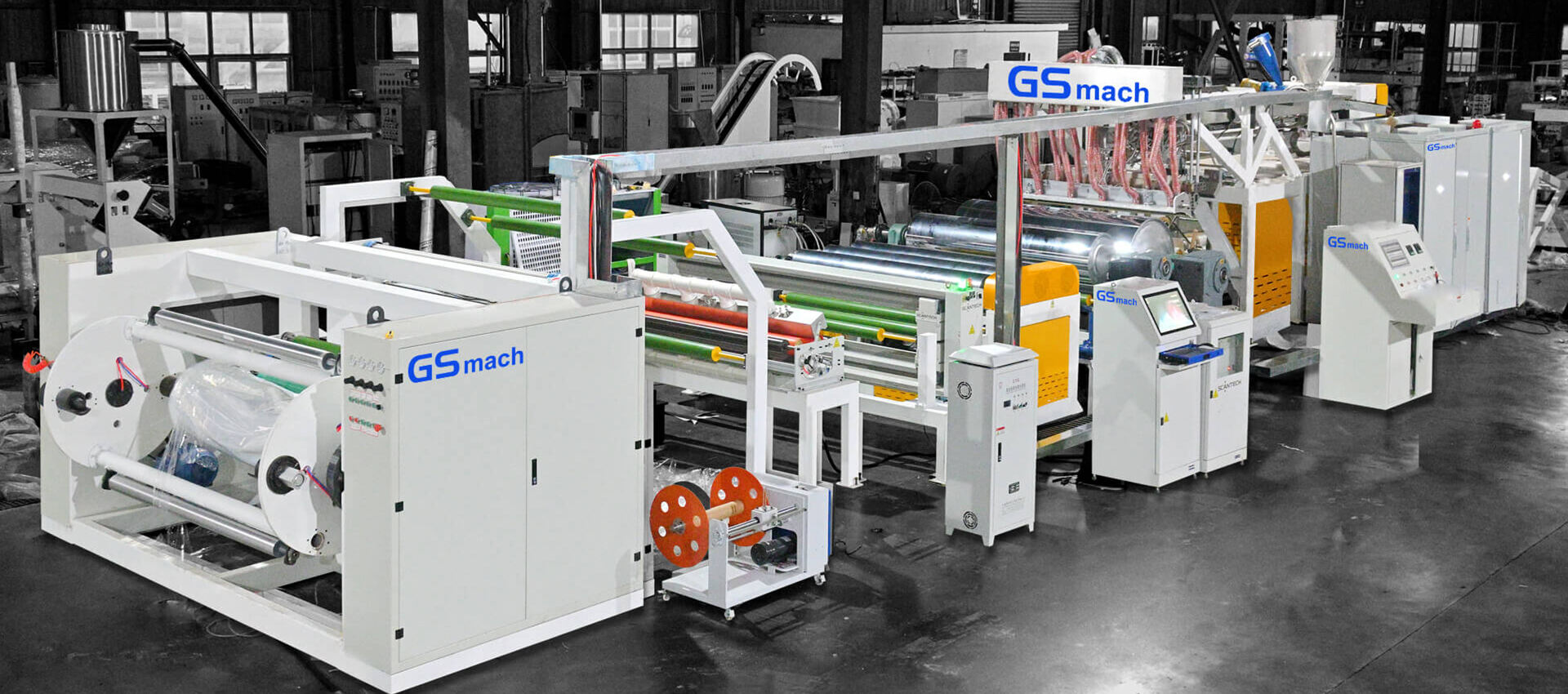Cast film machine

A cast film machine (also known as a cast film production line) is a device used to manufacture plastic film. It uses a casting process to form a continuous film web by extruding, stretching and cooling a molten plastic stock.
Cast film machines can produce many different types of film products, including:
Plastic packaging film: used to make food packaging bags, cling film, pharmaceutical packaging film, etc.
Industrial film: waterproof film, ground film, isolation film, etc. used in construction, agriculture, building materials and other fields.
Negative film: used in photography, printing and other fields of photo negative, printing negative, etc.
Medical film: medical film used for medical devices, operating rooms, bandages, etc.
Plastic bag film: used for shopping bags, garbage bags, sealing bags, etc.
Functional film: such as solar cell film, liquid crystal display film, flexible electronic product film, etc.
Cast film machines are widely used in packaging industry, agriculture, medical, construction, printing, electronics, etc., providing production solutions for plastic film products in these industries.
The cast film production line utilizes the casting process, which is based on the following principles:
1. Raw material handling: Plastic raw material (usually polymer granules or granule blends) is added to a hopper, and the raw material in the hopper is fed through a conveying system into a melting tank (also known as the melt zone).
2. Melting: In the melt tank, a heater heats the raw material above the melting point to melt it into a melt. Usually, the melting tank is equipped with an internal stirring device to ensure that the raw materials are fully melted and evenly mixed.
3. Extrusion: The melt is extruded out of the melt bath, pressurized by the extruder mechanism (usually a screw extruder) and squeezed out through the die extrusion outlet to form a melt stream with a large width. The size of the die opening determines the width of the final film.
4. Stretching: The extruded melt is stretched through a set of rollers to reduce its thickness and increase its length. This stretching process is called cool stretching, and the properties of the film can be adjusted by controlling the speed and temperature of the rollers.
5. Cooling: The stretched film is passed through a cooling device, usually a cooling roller, to allow it to cool rapidly and cure. Cooling helps the film maintain the desired dimensional stability and physical properties.
6. Winding: The cured film passes through a winding mechanism with a winding device and is collected and wound into a roll shape to form a continuous film web.
The entire cast film production line usually consists of the above steps, each of which is closely linked to achieve an efficient film production process. At the same time, the process parameters of the cast film line (e.g., extrusion temperature, stretch ratio, cooling rate, etc.) can be adjusted to suit different film products and requirements.
The cast film machine has the following characteristics:
1. High production efficiency: cast film machine adopts continuous production method, which can realize high efficiency film production. By adjusting the extrusion speed and cooling speed, higher production speed and output can be realized. 2.
2. High degree of automation in the production line: cast film machines usually adopt automated control system, which can realize the automatic control and monitoring of the whole production process. The operator only needs to monitor the machine status and make necessary adjustments, which improves the stability and reliability of the production line.
3. Strong adaptability: cast film machines can adjust process parameters, such as extrusion temperature, stretch ratio, cooling speed, etc., according to the needs of different products. This enables the machine to produce a variety of different types and specifications of film products to meet the diversified needs of the market.
4. Stable product quality: cast film machines have high production stability and consistency and can produce film products with consistent thickness, width and physical properties. By optimizing the process parameters and control system, high quality films can be obtained to meet customer requirements and standards.
5. Energy saving and environmental protection: Some advanced cast film machines adopt energy-saving designs and technologies to reduce energy consumption and environmental pollution. For example, adopting energy efficient heater and cooling system, improving waste gas emission treatment, etc. to reduce the impact on the environment.
To summarize, cast film machines are characterized by high efficiency, high automation, strong adaptability, stable product quality and energy-saving and environmental protection, which make them become important equipment for plastic film production and widely used in various industries.

